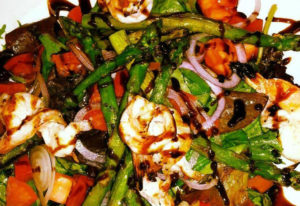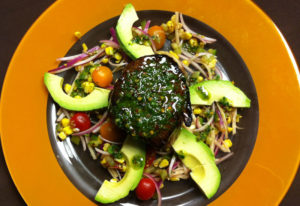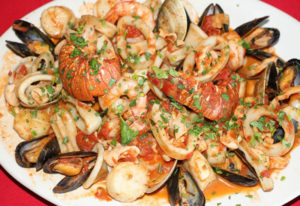East Northport April 2021
Farmingdale April 2021
Smithtown April 2021
3 Simple Graphs Proving This Is Nothing Like Last Time
Last March, many involved in the residential housing industry feared the market would be crushed under the pressure of a once-in-a-lifetime pandemic. Instead, real estate had one of its best years ever. Home sales and prices were both up substantially over the year before. 2020 was so strong that many now fear the market’s exuberance mirrors that of the last housing boom and, as a result, we’re now headed for another crash.
However, there are many reasons this real estate market is nothing like 2008.
1. Mortgage standards are nothing like they were back then.
During the housing bubble, it was difficult not to get a mortgage. “Significant space remains to safely expand the credit box. If the current default risk was doubled across all channels, risk would still be well within the pre-crisis standard of 12.5 percent from 2001 to 2003 for the whole mortgage market.”
2. Prices aren’t soaring out of control.
The left first graph shows annual home price appreciation over the past four years compared to the four years leading up to the height of the housing bubble. Though price appreciation was quite strong last year, it’s nowhere near the rise in prices that preceded the crash.
3. We don’t have a surplus of homes on the market.
We have a shortage. The months’ supply of inventory needed to sustain a normal real estate market is approximately six months. Anything more than that is an overabundance and will causes prices to depreciate. Anything less than that is a shortage and will lead to continued appreciation. In 2007, for example, there were too many homes for sale, and that caused prices to tumble. Today, there’s a shortage of inventory, which is causing an acceleration in home values.
4. New construction isn’t making up the difference in inventory needed.
Some may think new construction is filling the void. However, if we compare today to right before the housing crash, (graph #2), we can see that an overabundance of newly built homes was a major challenge then, but isn’t now. 5. Houses aren’t becoming too expensive to buy. As Mark Fleming, Chief Economist for First American, explains: “Lower mortgage interest rates and rising incomes correspond with higher house prices as home buyers can afford to borrow and buy more. If housing is appropriately valued, house-buying power should equal or outpace the median sale price of a home. Looking back at the bubble years, house prices exceeded house-buying power in 2006, but today house-buying power is nearly twice as high as the median sale price nationally.” (Graph #3) 6. People are equity rich, not tapped out. In the run-up to the housing bubble, homeowners were using their homes as personal ATM machines. Many immediately withdrew their equity once it built up, and they learned their lesson in the process. Prices have risen nicely over the last few years, leading to over 50% of homes in the country having greater than 50% equity – and owners have not been tapping into it like the last time.
Bottom Line – If you’re concerned that we’re making the same mistakes that led to the housing crash, take a look at the charts and graphs above to help alleviate your fears.
Public Service Message brought to you by “Keeping Curent Matters”
and Angel Chizzoniti, Douglas Elliman
Sport Clips to Bring MVP Hair Care to Commack
Fresh Take on Hair Care for Men and Boys of all Ages
COMMACK, NY – (March 2021) — Sport Clips Haircuts, the nation’s largest franchise dedicated to men’s and boys’ hair care, opened on December 12th in Commack’s Shopping Center, located at 6106 Jericho Turnpike (between Sobol and Prime Burger Bar). This new locally-owned business is the latest of the franchise’s with more than 1,800 locations across the U.S. and Canada. “Sport Clips offers our clients the expertise of well-trained stylists in a fun and clean environment where they can enjoy watching sports on TV during their haircut. The health and safety of clients and stylists are at the forefront of our grand opening process, and we look forward to introducing clients to our services and distinctive experience,” said Ryan DeMarco, owner of the new Sport Clips. “Our team members are following state and local opening protective guidelines, and are committed to providing a Championship Haircut Experience for clients in Commack.”
The new Sport Clips will offer:
• “Sport Clips Clean Certified” stylists who have completed course work and are practicing enhanced sanitation guidelines.• Stylists wearing masks, and disposable masks are available for clients upon request.
• Haircut services, including the “MVP Experience” that features a precision haircut, massaging shampoo, hot steamed towel, and neck and shoulder treatment.
Sport Clips in Commack will also provide free “MVP upgrades” to all first-time clients who purchase a haircut service. As part of our enhanced cleaning, disinfection and sanitation procedures, clients will be asked to remove their own cape when their haircut is complete as well as their own face towel after an MVP service to limit facial contact. Hours of operation will be Monday through Friday 9:00 a.m. – 8:00 p.m., Saturday 9:00 a.m. – 6:00 p.m., and Sunday 10:00 a.m. – 5:00 p.m. For more information, visit us at www.sportclips.com/NY305.
About Sport Clips Haircuts
Commack • 631-623-6438
Allergy Season Has Arrived, Understanding Pet Allergies

Like human beings, allergies are common in pets—especially dogs. Intense itching is the hallmark of most allergies. The end result of all allergies: inflamed skin (axillary and inguinal area), infected ears and swollen paws–uncomfortable for pets and a feeling of helplessness to their owners.
MOST COMMON ALLERGIES
muzzle, groin and extremities
WHAT TO DO
Out on the Vine
Macari
Palmer Vineyards
Pindar
Price: $25 per person.
Chocolate & Wine Pairing
A pairing of three handmade chocolates from the North Fork Chocolate Company, perfectly matched with three Pindar wines. Price: $25 per person.
Paint & Sip
Join Maggie with Wine of a Kind and have fun painting two wine glasses in a colorful flower theme. Price: $40 per person.
Raphael
Sannino Vineyard
(When reserving online, please note: one ticket is for two people.)
Wolffer Estate
Bring the Tasting Room experience home with Private Virtual Tastings led by one of Wolffer’s wine experts. Observe the appearance, aromas and palate of amazing wines while reuniting with friends and family, even from across the country! (Tasting packages based on group size – great for corporate team virtual outings too.)
Taste of Spring
Protecting Early Season Plants
Super Foods for a Nutritious Diet
The health community has long praised the benefits of vitamins and nutrients derived from natural sources. For those looking to improve their health or take preventative measures, these 10 natural super foods can be incorporated into your daily diet to help support your health:
Green Tea
Armed with a special type of antioxidants called polyphenols, green tea can decrease plaque formed in the arteries and can fight prostate cancer.
Rosemary
Studies have shown this powerful spice can reduce the risk of stroke, as well as protect against Alzheimer’s disease.
Almonds
Full of plant sterols and amino acids, almonds can help lower high cholesterol and promote muscle growth. These handheld treats are also rich in vitamin E, which can protect skin from sun damage.
Fatty Fish
Rich in omega-3 fatty acids, fatty fish such as salmon, flounder and sardines can lower the risk of heart disease.
Bananas
This easy, portable snack is loaded with essential potassium, which regulates the nervous system. Bananas also offer loads of vitamin B-6, which aids immunity and metabolism.
Whole Grains
These powerful body defenders have been known to boost immunity, protect against various cancers and reduce cholesterol.
Eggs
These energy-packed breakfast favorites contain a special type of protein that helps build muscle strength more than other proteins. When compared to other breakfast foods, eggs can also keep you feeling fuller longer with fewer calories and fat.
Spinach
Chock-full of magnesium, potassium and various vitamins and nutrients, spinach can prevent clogged arteries and protect against prostate and colon cancers.
Soy
This protein-packed food contains isoflavones, which can aid in treatment and prevention of prostate cancer. Also, research from the Food and Drug Administration shows that 25 grams per day can help lessen the risk of heart disease.
Dark Chocolate
Satisfy your sweet tooth and improve blood flow to the brain at the same time. Dark chocolate can also lower blood pressure and increase skin’s resistance to UV rays.
Find more health-conscious tips at eLivingToday.com
(Family Features) #13139 Source: eLivingToday.com
Carrot Cake
Italian Easter Pie…Pizza Rustica
Enjoy! xoxo Denise
























 20 lucky winners will win $500 each in prizes totaling $10,000.
20 lucky winners will win $500 each in prizes totaling $10,000.